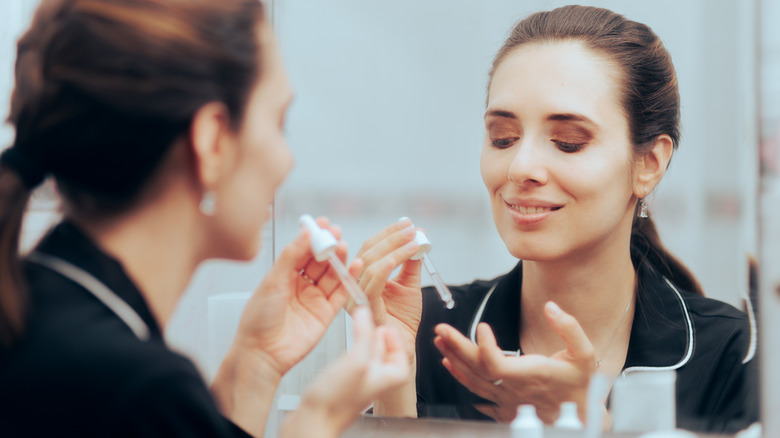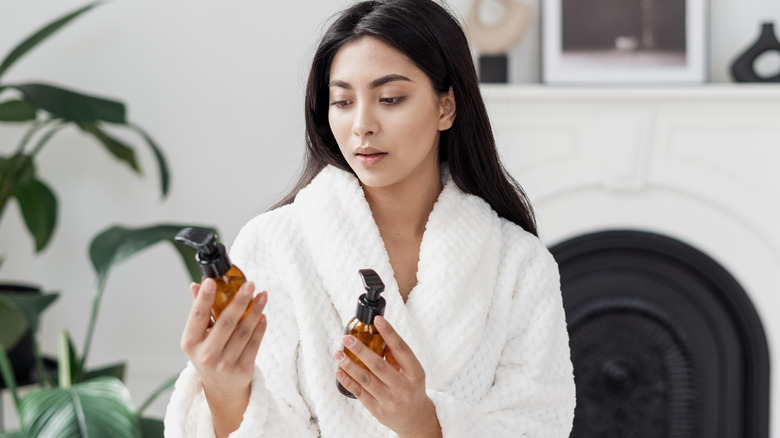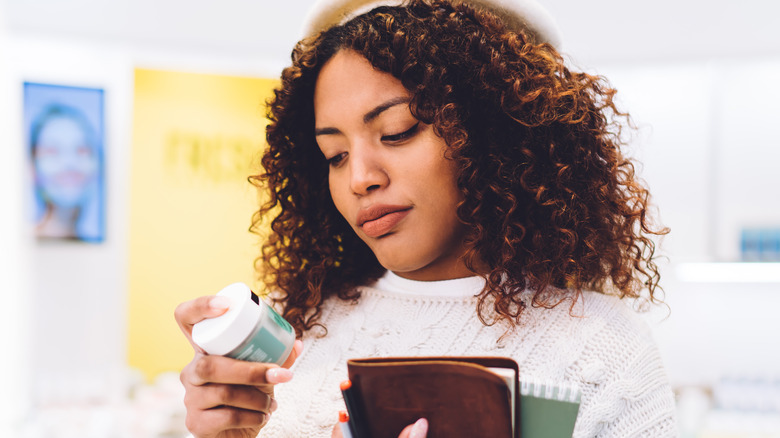The Mistake To Avoid When Using Retinol
There's a long list of skin benefits provided by retinol, as you've probably already heard. As Dr. Ewoma Ukeleghe, a skincare expert and the founder of SKNDoctor, told Glamour UK: "I'm obsessed with retinoids because it addresses a whole host of skin concerns. From acne, texture, [and] dullness, minimizing the appearance of pores and aging. It just really does everything." But, the process of getting all of these incredible benefits isn't as much of a straight shooter as one would hope.
According to Well and Good, retinol initiates rapid skin cell turnover and encourages collagen production. This process is what leads to glowy, smooth skin. However, Jen Sarkozy-Woog, treatments supervisor at Rancho Valencia Resort and Spa, points out that, to make all this magic happen, retinol first breaks down the skin's surface layer.
Thus, Cleveland Clinic warns that because of this, you can experience the following unwanted side effects; dry skin, burning, redness, peeling, flakiness, and even sunburn. While your skin adjusts to this strong chemical, it can be hard to prevent such outcomes. If you want to mitigate these side effects, you'll need the proper skincare routine.
The order of your products matters
A lot of the aggravation associated with using retinol occurs because it breaks down your skin's protective barrier. As a result, moisturizer will become your best friend, according to Well and Good. But, if you want your retinol to be effective, you must be conscious of the way you order and time the layering of your other serums. Dear Brightly clarifies that moisturizer must be layered on after applying your retinol. Using your moisturizer beforehand can reduce the potency of the product.
They recommend that you dab the retinol lightly over your skin after washing your face. Then, after applying it, you'll want to wait a moment for the product to soak fully into your skin. In fact, in an interview with Glamour UK, Linda Blahr, a skincare specialist and the Head of National Training at SkinCeuticals, suggested waiting around 30 minutes before applying your moisturizer, or anything else. However, specialists note that you shouldn't use just any moisturizer.
Look out for these crucial ingredients
The products you're using in conjunction with retinol are almost as important as the retinol itself. You need to look out for serums and moisturizers that seal in your skin's moisture and enhance the anti-aging effects of retinol. Celebrity cosmetic dermatologist Dr. Jaishree Sharad shared with Vogue India that hyaluronic acid and niacinamide are two of the most effective ingredients for doing so.
Niacinamide is an antioxidant that assists the skin in repairing itself and forming new cells. This process protects the skin, adds moisture, and reduces inflammation — all of which counter the harsher effects associated with using retinol. Further, it has been shown to tackle hyperpigmentation too. Niacinamide pairs perfectly with retinol by speeding up your path to the glowy skin you're looking for.
Similarly, hyaluronic acid restores the skin's hydration levels and strengthens its protective barrier. Hyaluronic acid can be applied in combination with retinol, or on its own. But again, applying either of these before your retinol can weaken the skin-clearing effects, so always be cautious of the order of your products, as well as the products themselves.


